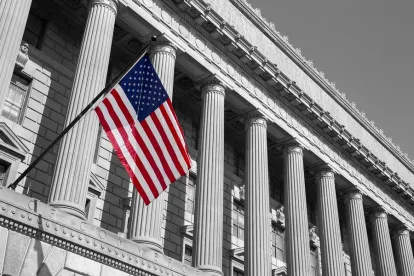On March 25, 2022, pursuant to allegations made by Auxin Solar Inc., the US Department of Commerce (Commerce) initiated a circumvention inquiry into whether imports of crystalline silicon photovoltaic cells (CSPVs) from Cambodia, Malaysia, Thailand or Vietnam (collectively, the Target Countries) are circumventing antidumping duty (AD) and countervailing duty (CVD) orders (Orders) on CSPVs from China[1] that could profoundly affect the companies that import or rely on imported CSPVs in the United States.[2] On May 2, 2022, Commerce released a memorandum detailing three important aspects of its ongoing inquiry should it preliminarily or ultimately determine that CSPVs from the Target Countries are circumventing the Orders.[3] In those three aspects, Commerce:
-
Clarified the scope of the circumvention inquiry, noting that CSPVs incorporating wafers produced outside of China from China-sourced polysilicon are outside the scope of the inquiry
-
Stated that, in the event of affirmative circumvention findings, it intends to establish certification procedures that would allow exporters and importers of CSPVs to establish that particular entries do not incorporate key components or processes from China and should therefore be excluded from the Orders altogether
-
Indicated that the certification process could be used to establish the appropriate company-specific rate for those entries that are included in the scope of the circumvention inquiry. Specifically, Commerce proposed that exporters can certify the identity(ies) of the Chinese producer(s) that supplied the inputs.
Commerce also invited interested parties to provide comments and relevant factual information on these potential certification requirements by 5:00 pm EDT on May 19, 2022. We discuss each of the above points in more detail below. For more information on the initiation of the circumvention inquiry and the process in general, check out our prior client alert here.
IN-DEPTH
ANALYSIS
-
Clarification of the Scope of the Circumvention Inquiry
Commerce acknowledged that this inquiry differs from prior circumvention proceedings as it involves numerous inputs and multiple third countries. In addition, various steps of the production process (e.g., refining polysilicon, forming it into ingots, cutting wafers, doping wafers and assembling modules) can happen in different countries. Importantly, Commerce then clarified that “[w]afers produced outside of China with polysilicon sourced from China are not subject to these circumvention inquiries.”[4] While more clarity on the reach of the circumvention inquiry is needed, this is a useful first step. It should be noted, however, that this clarification reinforces Commerce’s apparent willingness to move from its prior position that “the essential component of the solar cell is the p/n junction”[5] and that the country in which the p/n junction is formed determines the country of origin of the CSPV for purposes of the Orders.[6]
-
Proposed Certification Procedures That Will Allow for the Application of Company-Specific Rates on Chinese Manufacturers
Typically, after making an affirmative circumvention finding, whether preliminary or final, Commerce establishes certification procedures to allow importers and exports to certify the source of materials used in the allegedly circumventing products and establish that such products are not subject to the underlying AD or CVD orders.[7] Commerce’s memorandum indicates that, in the event of an affirmative circumvention determination in this proceeding, it intends to establish a similar certification process but does not provide details as to which specific Chinese inputs or products will be considered key to bringing a product within the scope of the underlying Orders. Where an exporter/importer can provide a certification that specific entries of CSPVs do not include such key Chinese components, they will not be subject to the scope of the circumvention determination and will not be subject to any AD or CVD duties. Where they cannot, they will be subject to the circumvention finding and the importer will be required to post AD and CVD cash deposits on such entries.
Commerce’s proposed structure for certifications differs from the structure of certifications in past circumvention cases in that it includes a process to allow “importers and exporters to certify as to the identity(ies) of the Chinese producer(s) that supplied the inputs.”[8] The identity(ies) of the Chinese producer(s) would then be used to determine the applicable AD and CVD company-specific cash deposit rates. As Commerce’s memo notes:
[I]f Chinese-origin wafers are used in the completion of solar cells or modules in Vietnam, Thailand, Cambodia and/or Malaysia and were supplied by a Chinese manufacturer with a company-specific rate, for such imports, Commerce intends, in the event of an affirmative preliminary or final determination, that the cash deposit rate for the relevant imports from the third country will be equal to that Chinese manufacturer’s and/or exporter’s company-specific rate(s).[9]
Thus, where entries are subject to the circumvention finding, this proposed certification process would allow exporters and importers to indicate the appropriate cash deposit rates to apply on such entries. This designation is particularly important in a case such as this where the rates vary widely. Accordingly, the establishment and use of this aspect of the certification process could allow interested parties to lower their tariff exposure risk to more manageable levels based on their choice of manufacturer.
As Commerce’s memo notes, however, in prior circumvention inquiries, Commerce has excluded companies from the certification process if it determines that such companies did not cooperate to the best of their ability in the inquiry or if companies were unable to trace the inputs from the subject country to actual merchandise imported into the United States. Companies that are not eligible to participate in the certification process would have no ability to establish that their entries should be excluded from any circumvention finding or to establish the applicable cash deposit rate. Such entries would presumably be entered at the China-wide rates specified in the Orders.[10]
CONCLUSION
While the initiation of the circumvention investigation introduced numerous material uncertainties as to duty increases and the impact thereof upon suppliers and projects (as noted in our prior client alert), Commerce’s May 2 memorandum begins to provide some of the needed clarification. As we noted at the start, interested parties have until 5:00 pm (EDT) on May 19, 2022, to submit comments and factual information to Commerce regarding these proposed certification requirements.





 />i
/>i
